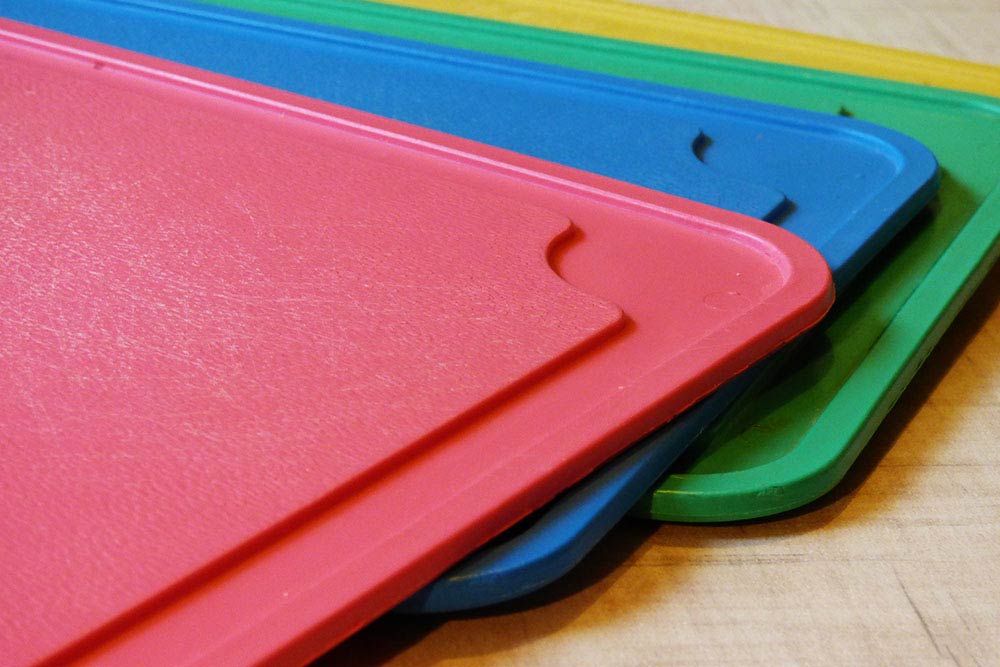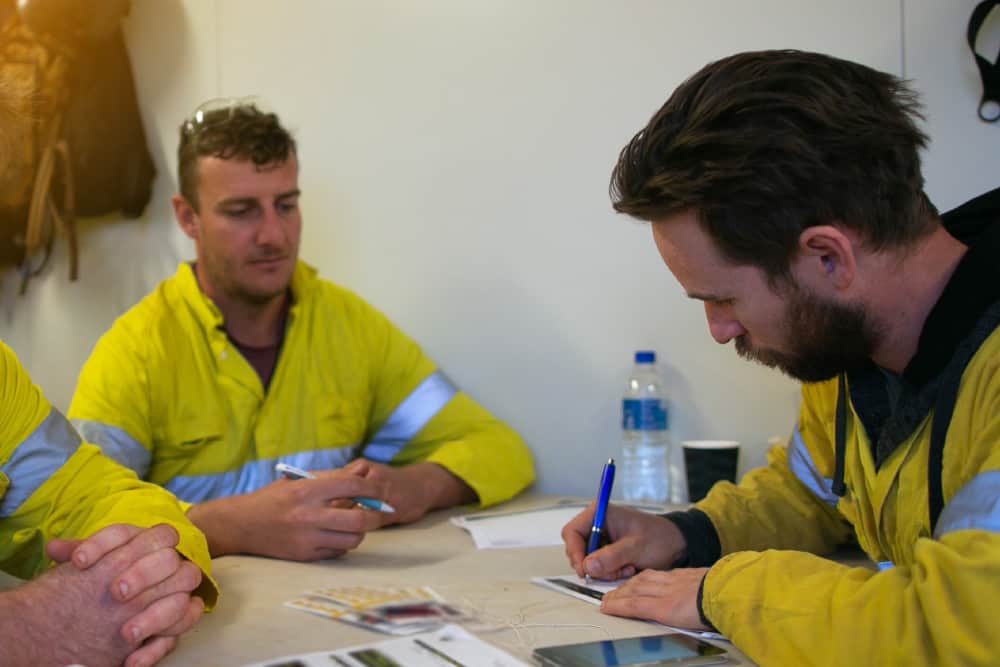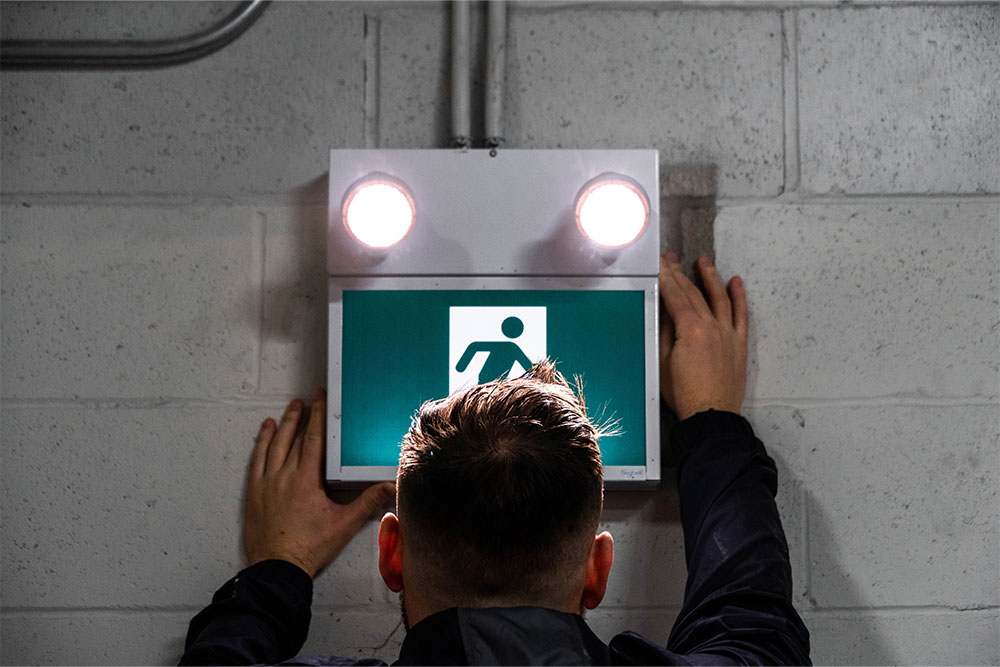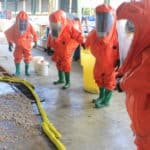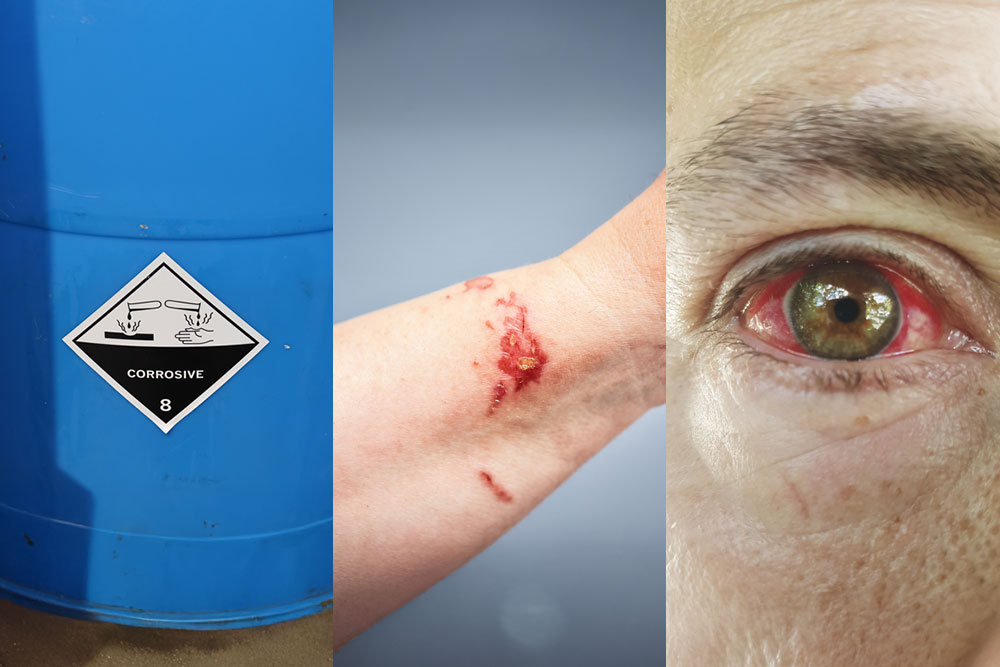
Corrosive chemicals like cleaning agents, disinfectants and acids are in almost every workplace. These substances can be dangerous. A simple splash, an unnoticed spill or improper handling may lead to chemical burns.
If you or a colleague gets any type of chemical burn, it’s important to know how to treat it.
In this blog, we’ll go over the types, symptoms and treatments of chemical burns so you know what to do in an emergency.
Key Takeaways
- A chemical burn, also known as a caustic burn, happens when a corrosive substance comes into contact with the skin, eyes, mouth or internal organs after ingestion or inhalation.
- There are three types of chemical burns based on the severity of tissue damage: superficial (first-degree), partial-thickness (second-degree) and full-thickness (third-degree).
- First aid should be administered as soon as possible. Rinse the affected area with cool running water, remove any contaminated clothing and wrap the area loosely with a dry sterile bandage. Over-the-counter pain medicines can help numb the burning sensation.
- Severe burns need urgent medical attention. Call 999 or go to A&E immediately.
What is a Chemical Burn?
A chemical burn (also called a caustic burn) happens when a corrosive substance touches your skin, eyes or mouth. These burns can also affect the internal organs if corrosive substances are ingested or inhaled.
Chemical burns can happen at home through the misuse of skin or hair care products, but the risk is much higher in workplaces that handle more hazardous chemicals.
Common causes of chemical burns at work include contact with:
- Acids
- Alkalis
- Solvents
- Detergents
- Disinfectants
- Petroleum products
- Industrial cleaners
- Pesticides
If you work in an environment where these or other corrosive substances are used, both you and your colleagues are at risk of chemical burns without proper precautions.

Types of Chemical Burns
Like other burns, chemical burns are classified by the harm they cause:
Basic First Aid Training
Our First Aid at Work Course provides a thorough understanding of a practical approach, in case of a medical emergency, without putting oneself in a dangerous situation. It explores the key concepts of first aid at work to help save lives and ensure compliance.
1. Superficial or First-Degree Burns
These burns affect only the outer layer of skin, causing redness and pain. They usually heal fully within a few days to a week without lasting damage.
2. Partial Thickness or Second-Degree Burns
These burns go deeper into the skin, causing blisters and swelling. Most second-degree burns heal, but some will cause scarring or permanent skin discolouration.
3. Full Thickness or Third-Degree Burns
These burns destroy all layers of skin and may extend into deeper tissues. Affected skin can appear white, black or leathery and may actually feel numb due to nerve damage. In fact, because of this nerve damage, third-degree burns themselves may not be immediately painful, though surrounding areas often are.
Signs and Symptoms
The symptoms of chemical burns depend on multiple factors, including the chemical agent and the duration and type of exposure.
Common symptoms of external chemical burns include:
- Irritation, redness or burning
- Blackened or dead skin (from acid burns)
- Numbness or pain
- Vision changes if chemicals contact the eyes
If a chemical is swallowed, additional symptoms may include:
- Irregular heartbeat
- Headache
- Low blood pressure
- Shortness of breath or coughing
- Seizures, dizziness or muscle twitches
Treatment
First Aid
First aid should be given to chemical burns as soon as possible.
Start by rinsing the affected area with water. Keep it under running water for 10 to 20 minutes. (The same procedure applies if the chemical has come into contact with your eyes – rinse them thoroughly for at least 20 minutes before seeking emergency care.)
Remove any clothing or jewellery that may have come into contact with the chemical.
If possible, wrap the affected area loosely with a dry, sterile dressing or a clean cloth.
For minor burns, you can take an over-the-counter pain reliever, such as ibuprofen.
But head straight to a hospital if:
- The burn covers an area larger than 3 inches in width or length.
- It affects sensitive areas such as the face, feet, hands, groin or buttocks.
- It involves a major joint, like the knee.
- The pain is severe and unaffected by over-the-counter pain medication.
- You experience symptoms of shock, including shallow breathing, low blood pressure or dizziness.
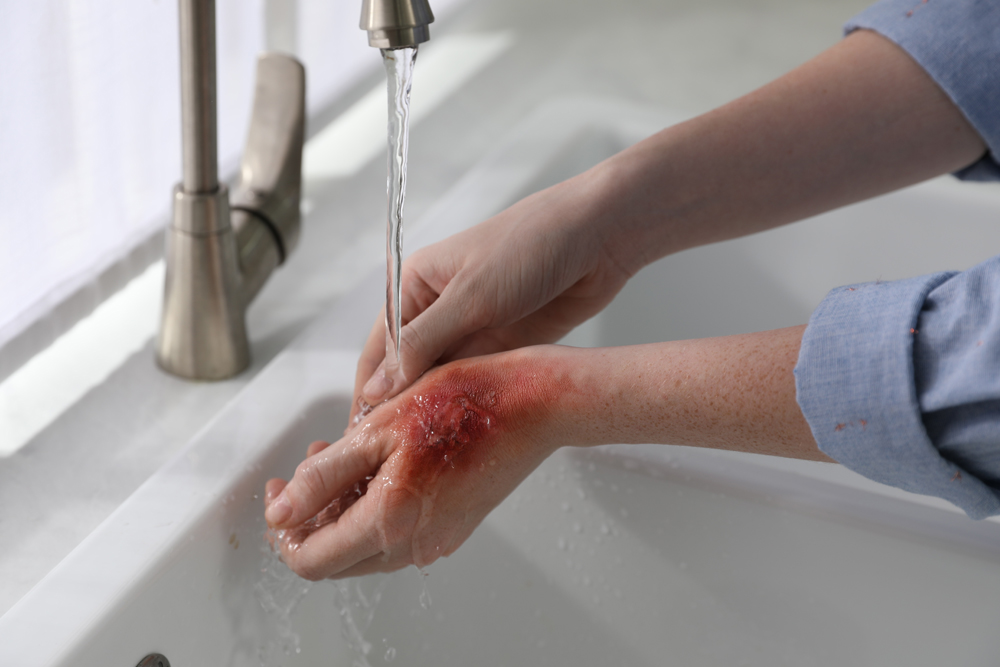
Mistakes to Avoid When Treating A Chemical Burn
When treating a chemical burn, avoid these mistakes to prevent further damage:
- Rinse the affected area with water immediately. Waiting too long allows the chemical to penetrate deeper, worsening the injury.
- Don’t use hot or ice-cold water. Hot water can worsen the burn, while ice or very cold water can restrict blood flow. Use cool running water instead.
- Don’t rub or scrub the burn, as this can worsen tissue damage and increase the risk of infection.
- Avoid attempts to “neutralise” a burn, such as by applying baking soda to an acid burn. Neutralising reactions can generate heat and cause further injury.
- Don’t apply butter, oil or creams to calm the affected area as these substances trap heat and chemicals in the skin, worsening the burn. Only apply doctor-recommended ointments.
- Don’t cover burns with adhesive bandages. Sticky dressings can stick to damaged skin and hurt badly when removed. Use a loose, sterile dressing instead.
- Don’t pop blisters, as this increases infection risks and slows the healing process. Let them heal naturally.
- Don’t ignore signs of severe burns. Seek medical help if the burn is deep, large or affects the face or major joints. Signs of infection are another red flag that professional treatment is needed.
- Don’t assume the burn is minor. Some chemicals, like hydrofluoric acid, can cause deep tissue damage even if symptoms seem mild at first. Monitor the burn’s condition over time.
Treating Chemical Burns in the Workplace
Working around hazardous chemicals means there’s always a risk of spills or accidental contact. If a chemical burn happens, knowing the right first aid can prevent serious harm.
Our online First Aid at Work Course equips you with the skills to respond quickly and effectively. You’ll learn how to administer first aid for chemical burns, including flushing the affected area, removing contaminated clothing and recognising when medical attention is required.
Training will help you to act faster when it matters most.
